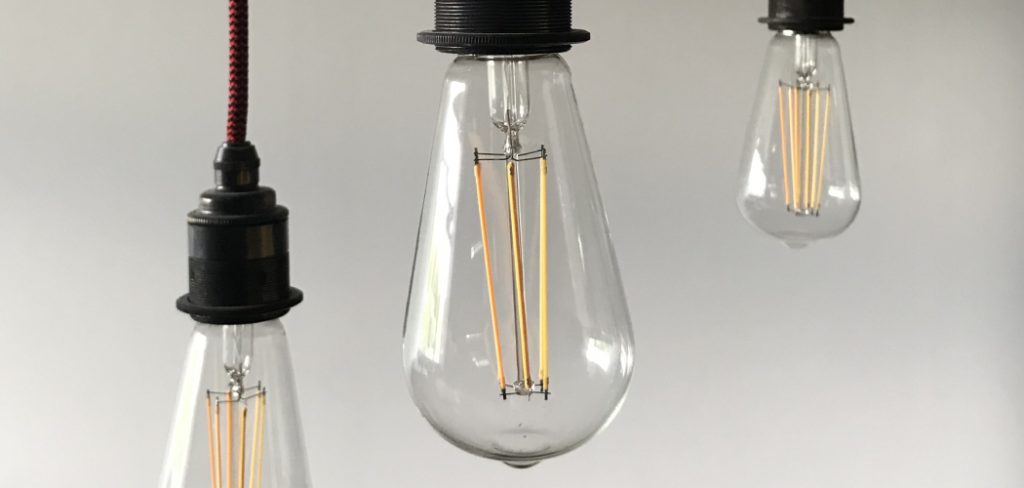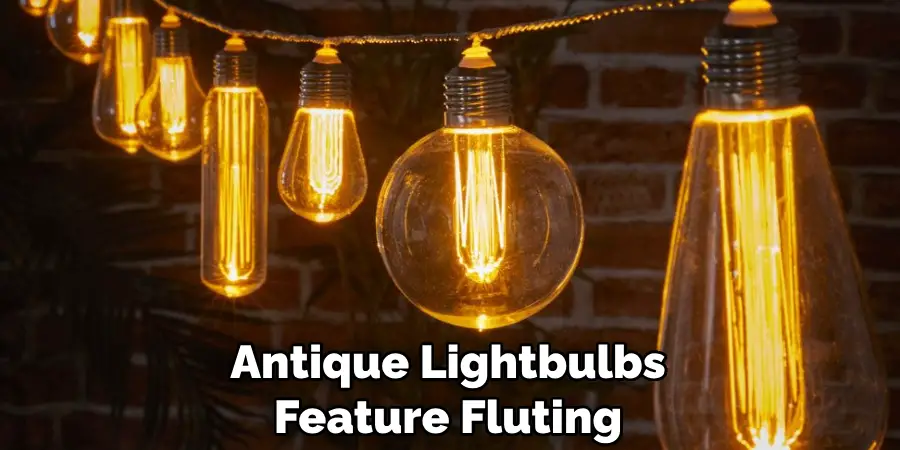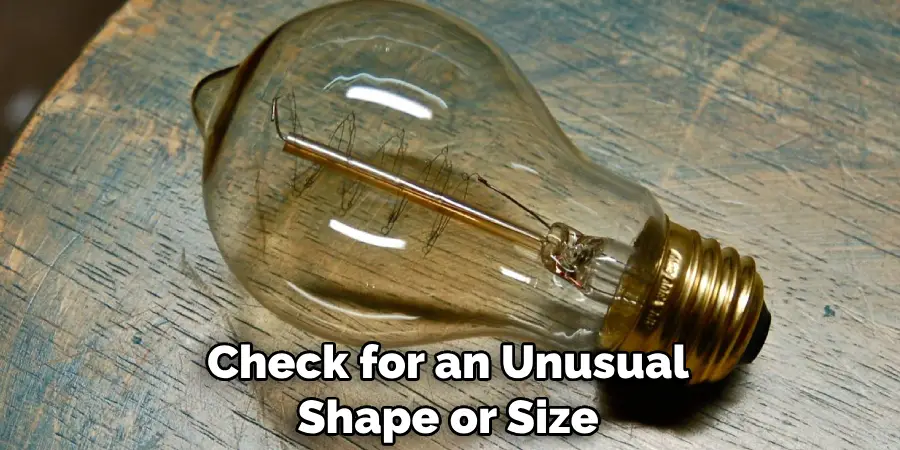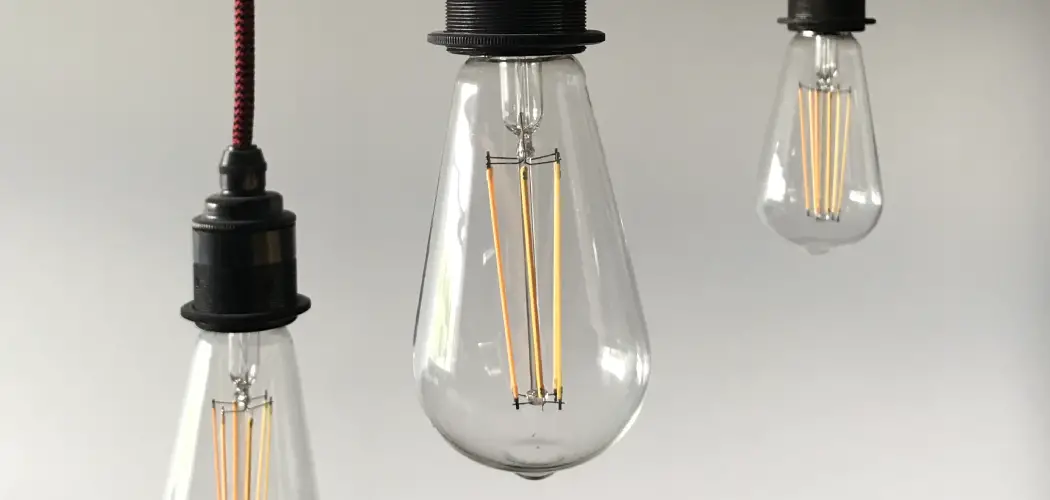If you’re an avid collector of antiques, or just have a knack for spotting something special in the vintage shop, identifying antique light bulbs can be a curious and rewarding experience.
Whether you’re looking for that perfect piece to finish your collection or trying to find out if that garage sale finds is truly valuable, learning how to identify antique light bulbs will help ensure that you make the right purchase.

We’ll discuss what features to look for in antique light bulbs, as well as how knowing certain characteristics can dramatically increase the value of your item. So gear up – it’s time to start collecting!
8 Easy Ways on How to Identify Antique Light Bulbs
1. Look for Filament Style:
A traditional source of light, early bulbs featured thin wires that usually glowed red-hot when lit. These filaments are the most common type used in vintage lighting and can help you quickly identify an antique bulb. Antique light bulbs are made from a variety of materials, including carbonized bamboo and tungsten.
2. Check for Incandescent Design:
Older incandescent bulbs have a distinctive shape with a long neck that extends up to the socket. By comparison, newer fluorescent and halogen bulbs often feature an enclosed tube design with more uniform lighting. If you spot an unusual shape, such as a cone or cylinder, it may be an antique and worth further examination.
3. Look at the Bulb’s Base:
The base of the bulb is another crucial identifying feature for vintage bulbs. Older models, such as those used in Edison-style lamps, often have a threaded base that screws into the fixture. However, newer bulbs typically feature a snap-in or clip-in design that’s easier to install and replace. You can ensure you’re buying an antique bulb by looking for a threaded base.
4. Check for Fluting:
Many antique lightbulbs feature fluting or grooves and ridges in the glass. This helps create more even lighting and provides a decorative touch to the bulb. If you spot these features, it’s likely that your bulb is an antique. Fluting can also be used to identify the age of a bulb since it was gradually phased out over the years.

5. Inspect the Socket:
The socket, or holder, of an antique lightbulb, is usually made from brass and has either a round or bayonet-style design. The type of socket will help you determine how old the bulb is since certain designs were used during different eras. If the socket is made from plastic or has a modern-style clip, it likely means the bulb isn’t an antique.
6. Compare the Wattage:
The wattage of a bulb can also be used to help identify an antique piece. For example, older bulbs usually featured lower wattages than those available on the market today. This is because electricity was more expensive in previous decades and bulbs had to be designed to conserve energy.
7. Research the Maker:
Many antique lightbulbs were made by specific companies or manufacturers, so checking for any identifying stamps or logos can help you determine their age and value. Many of these include names like Edison, Osram, Philips, or GE. You can also reference our guide on How to Find the Value of an Antique Light Bulb.
8. Consider its Overall Condition:
The condition of a bulb is also important when it comes to assessing its value. While some scratches and signs of use are acceptable, more severe damage could mean that your item isn’t worth as much. Check for any dents, chips, or cracks in the glass and try to determine if it has been refurbished.
Identifying antique light bulbs can be a fun and exciting process. By familiarizing yourself with the features listed above, you’ll have a better chance of finding that special piece to complete your collection. Just remember to research the maker and assess the overall condition of the bulb before making a purchase. Good luck!
Additional Tips and Tricks to Identify Antique Light Bulbs:
1. Look for a raised embossed logo or symbol. Many antique bulbs have logos, symbols, and trademarks molded into the glass which can help to identify them.
2. Check the labeling on the base of the bulb. Early light bulbs often had words like “Edison”, or other manufacturers’ names printed on the base of the bulb to identify them.
3. Check for an unusual shape or size. Many antique bulbs have a distinctive shape that is easy to spot, such as a teardrop, pear-shaped, round ball, or egg-like design.

4. Look for tell-tale signs of age. Check for any signs of wear, such as small chips or cracks in the glass.
5. Examine emailer layers that could indicate an old bulb. The inside of a light bulb can become yellowed over time due to a process known as “emailing” which is caused by heat and age.
6. Check for the presence of an incandescent filament. Many antique light bulbs have a visible incandescent filament that can be used to identify them.
7. Look up the bulb in an online database if needed. If all else fails, you can search for your bulb’s model number or description in an online database such as Antiques Illuminated (antiquesilluminated.com) to get more information about it.
8. Research the history of the manufacturer. If you’re still unsure, researching the history of the light bulb’s manufacturer may help you identify it. Check out old catalogs or sites like Antique Lamp Supply (antiquelampsupply.com) to look up your bulb’s manufacturer and learn more about it.
9. Consult an expert if needed. If you still can’t identify the antique light bulb, consider consulting a professional appraiser for assistance. They will be able to give you an accurate assessment of the light bulb’s authenticity and age.
By following these tips and tricks, you should be able to identify any antique light bulbs that come your way. With the help of an expert, you can ensure that you are getting an authentic piece of history and get the most out of your antique light bulb collection. Good luck!
Frequently Asked Questions
What Are the Common Ways to Identify Antique Light Bulbs?
There are a few common ways to identify antique light bulbs. First, look for unique shapes and styles that might indicate an older bulb type or era of manufacturing. Pay attention to the base, as bases on antique bulbs may be different than modern ones.
You can also look for the manufacturer’s markings or labels on the bulb itself. Finally, take note of any unique colored glass or detailed patterns that could signify a vintage light bulb.

What Are Some Signs of an Antique Light Bulb?
Look for bulbs with unique shapes and styles that may indicate an older type or era of manufacturing. Pay attention to the base, as antique bulbs often have different bases than modern ones. Additionally, take note of any unique colored glass or detailed patterns that could signify a vintage light bulb.
You may also be able to find the manufacturer’s markings or labels on the bulb itself. This can help you determine the age and authenticity of the light bulb.
What Are Some Typical Antique Light Bulb Bases?
The most common antique light bulb bases are screw, bayonet, mogul, candelabra, and Bipin. Screw base bulbs were the first standard to be used in the United States. Bayonet bases have two pins that fit into slots on a socket.
Mogul bases are larger than screws and bayonets and have two contacts. Candelabra base bulbs, also known as Edison-base bulbs, have a smaller threaded base that is common in chandeliers. Bipin bases have two pins on either side of a center contact.
Are There Any Other Ways to Identify Antique Light Bulbs?
Yes, there are other ways to identify antique light bulbs. One way is by the wattage or voltage of the bulb. Bulbs with higher voltages and wattages were often used in older lighting fixtures. You can also try putting an ohmmeter on the bulb to measure its resistance; bulbs with higher resistance are usually older.
Finally, you can try looking up the part number or manufacturer’s name if it is printed on the bulb. This could help you identify the age and type of light bulb.
Are Antique Light Bulbs Safe?
Antique light bulbs may not be as safe as modern ones since the insulation and wiring materials used in their construction may be outdated. It is important to check the condition of any antique bulb before use, and if there are any signs of wear or deterioration it should be replaced immediately.

If you plan to use antique light bulbs, it is best to have them inspected by a professional electrician before installation.
Conclusion
In conclusion, knowing how to identify antique light bulbs can be an exciting and rewarding endeavor. With the right knowledge and research as well as attention to detail, it is possible to find beautiful vintage lighting pieces worth keeping around for a long time.
While some may have trouble discerning between modern reproductions and true antiques, hopefully, this guide has provided the basic information needed to distinguish one from the other. Whether shopping online or at a flea market, antique light bulbs can provide character and a unique ambiance to any home—making it worthwhile to take the necessary steps in finding the perfect piece.

